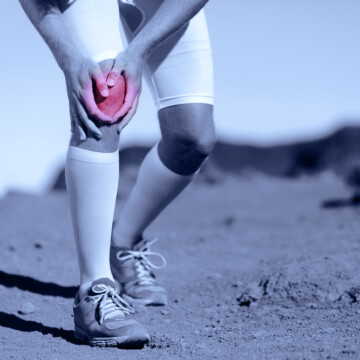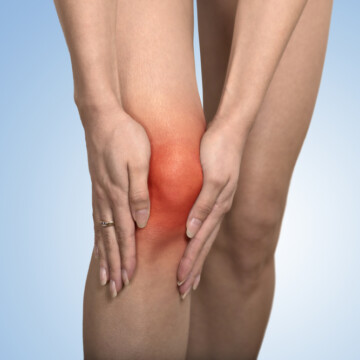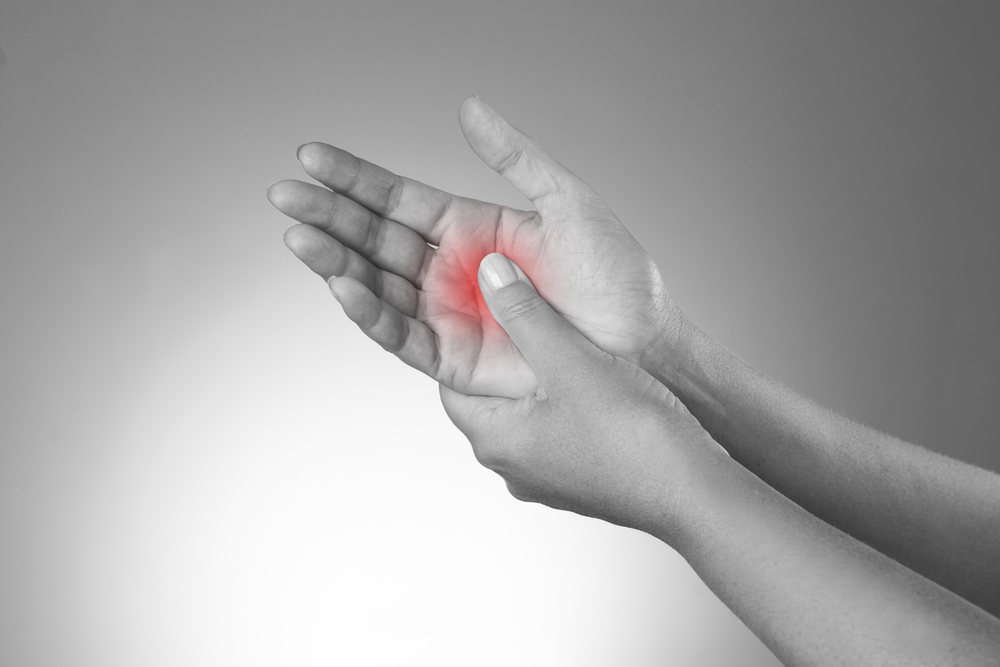
Carpal Tunnel Syndrome (CTS) is a condition that affects the hands and wrists. It can cause numbness, tingling, pain, and muscle weakness in the hands. Many people with CTS find that it causes difficulty when they try to bowl.
However, there is no reason why you can't bowl with carpal tunnel syndrome – you just need to make some adjustments to your game.
In this post, we'll discuss some of the ways you can adapt your bowling technique to manage your symptoms and still enjoy a game or two.
Keep reading for more tips!
Contents
- 1 Can You Bowl With Carpal Tunnel?
- 2 What Is a Carpal Tunnel?
- 3 How Can I Treat Carpal Tunnel?
- 4 Is Bowling Bad for You if You Have a Carpal Tunnel?
- 5 What Symptoms Should a Bowler Monitor if They Have a Carpal Tunnel?
- 6 When Can I Bowl Again After a Carpal Tunnel?
- 7 How Long Does It Take To Recover From Carpal Tunnel?
- 8 What Are the Risks of Bowling Again if I Don’t Get Carpal Tunnel Treatment?
- 9 Can Bowling Make a Carpal Tunnel Worse?
- 10 How Do You Prevent Carpal Tunnel While Bowling?
- 11 What Activities Should You Avoid if You Have a Carpal Tunnel?
- 12 What Activities Can You Do After Carpal Tunnel?
- 13 Frequently Asked Questions
Can You Bowl With Carpal Tunnel?
Yes, you can certainly bowl in a bowling alley with carpal tunnel syndrome. The key is to use a bowling ball that is the correct size and weight for you. A too-heavy ball can put excessive strain on your wrist and cause further pain. Also, warm up your muscles before bowling by doing some simple exercises like arm circles or jogging in place. Try To gently shake out your hands and wrists as well.
It is also important to avoid using too much force and use an ergonomic grip when holding the ball. This will help reduce the amount of stress on your wrist joints.

Key Takeaways
- Bowling with Carpal Tunnel Syndrome (CTS): You can bowl despite having CTS. To manage symptoms effectively, use a lightweight ball, adopt an ergonomic grip, and warm up your muscles with exercises like arm circles.
- Understanding Carpal Tunnel Syndrome: CTS is marked by numbness, pain, and tingling in the hands due to median nerve compression in the wrist. It commonly affects those with repetitive hand or wrist motions.
- Treatment Options for CTS: Address CTS with splints or braces to immobilize the wrist, physical therapy for muscle and joint strengthening, and possibly surgery for severe cases to relieve median nerve pressure.
- Activities and CTS Management: While bowling is not detrimental to CTS, avoid excessive force and repetitive wrist motions. Use breaks and cold packs to alleviate symptoms, and consider wearing a wrist brace for support.
- Recovery and Prevention: Recovery from CTS surgery can take up to 12 weeks, with symptom improvement often seen in the first few weeks. Prevent CTS by practicing proper hand and wrist form, taking regular breaks, and doing hand exercises to maintain strength and flexibility.
What Is a Carpal Tunnel?
Carpal tunnel is a common condition that can cause pain and numbness in the hand and fingers.
The carpal tunnel is a small space in the wrist that houses the tendons and nerves that control movement in the hand. If these tendons or nerves become swollen, they can compress the tissue in the carpal tunnel and cause pain.
Symptoms of carpal tunnel include pain, tingling, or numbing in the hand or fingers, especially when holding something or using the hand for prolonged periods of time.
The condition is most common in people who are repeatedly using their hands for tasks such as typing or sewing. While there is no cure for carpal tunnel, there are treatments that can help relieve symptoms and improve the quality of your strikes.
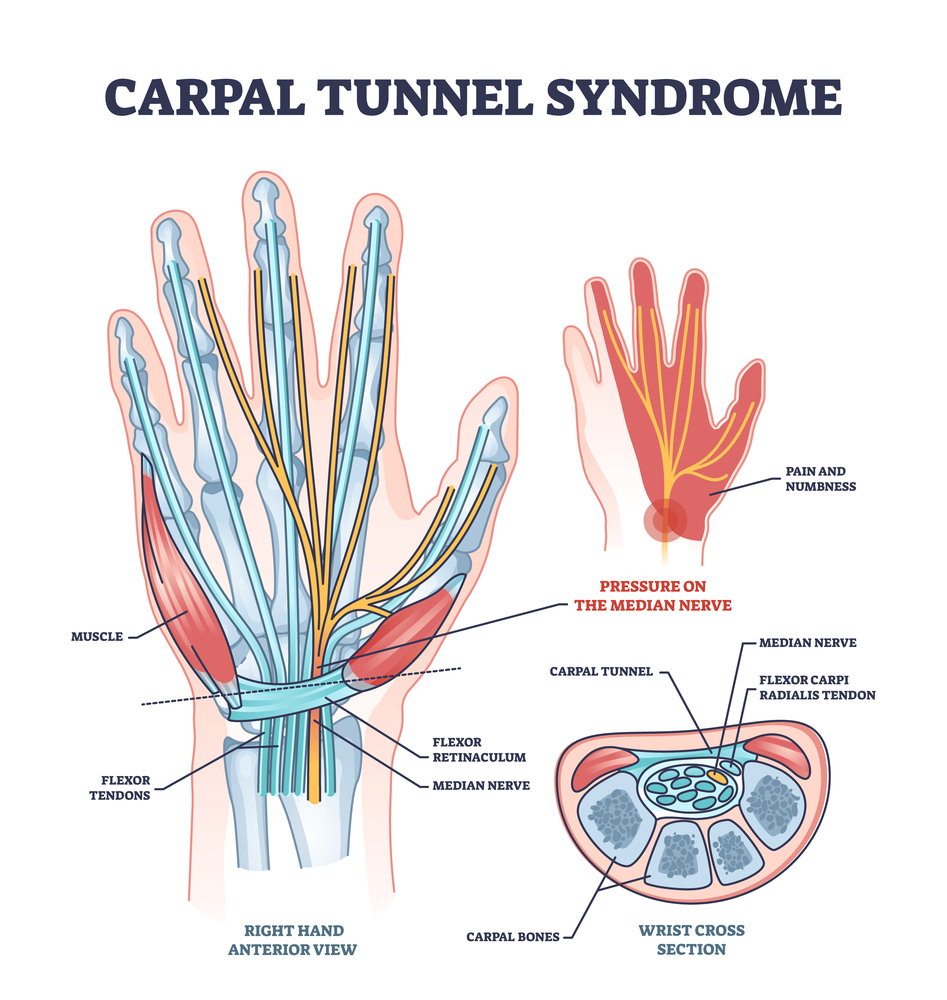
How Can I Treat Carpal Tunnel?
There are a number of ways to treat carpal tunnel, both medical and non-medical.
One of the most common treatment options for carpal tunnel is wearing a splint or brace. This helps to immobilize the wrist and hand, which can help reduce symptoms.
Physical therapy is another option that can help strengthen the muscles and joints in the affected area. In some cases, surgery may be recommended to release pressure on the median nerve.
There are also some lifestyle changes that can help relieve symptoms of carpal tunnel, e.g.:
- Taking frequent breaks to rest the hands.
- Avoiding activities that could worsen the symptoms.
- Use cold packs to reduce swelling.
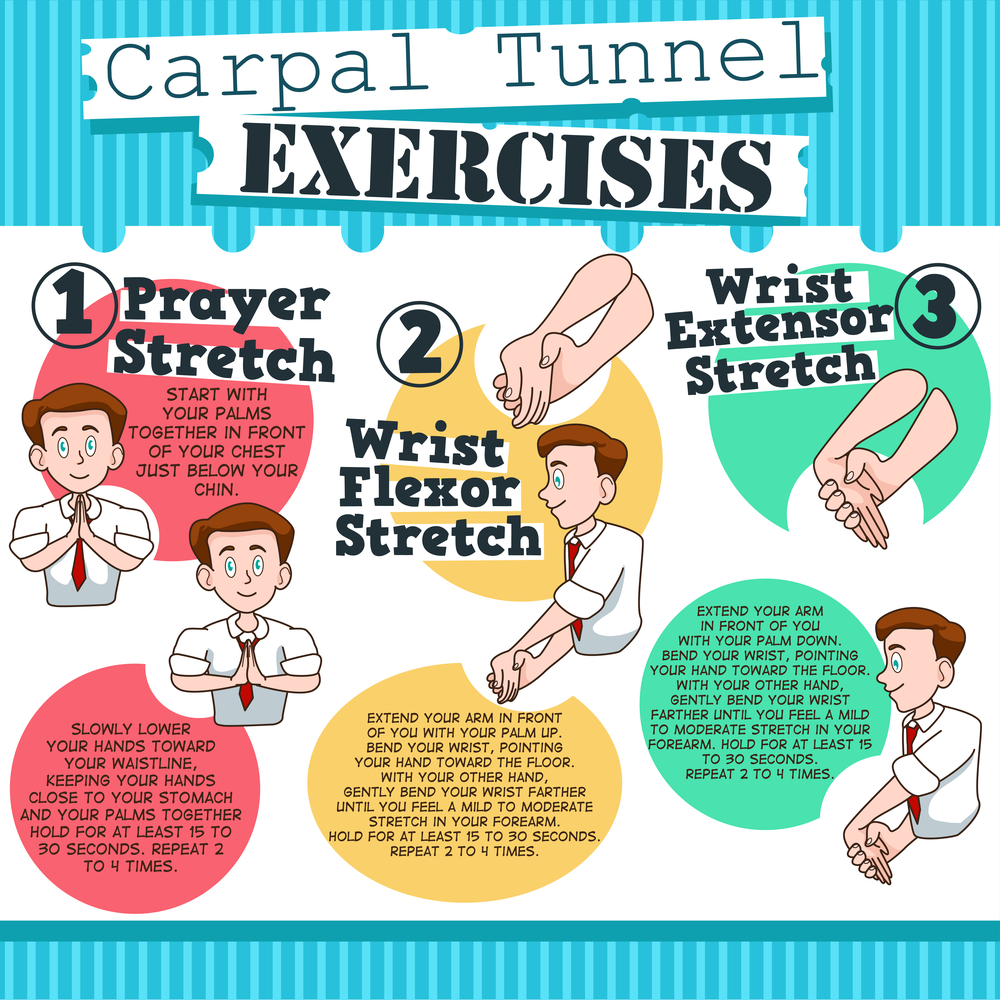
Is Bowling Bad for You if You Have a Carpal Tunnel?
Carpal tunnel is caused by compression of the median nerve, which runs through a narrow passage in the wrist. It can also be caused by repetitive motions of the hands and wrists, such as typing or using a mouse. Some people may be more susceptible to the condition due to genetic factors.
However, since bowling involves repetitive motions of the hands and wrists, some people may wonder whether it is bad for those with carpal tunnel syndrome.
Well, there is no evidence that bowling worsens the condition or causes long-term damage. In fact, some studies have found that bowling can actually help to improve hand-eye coordination.
So if you enjoy bowling and have carpal tunnel syndrome, there is no need to worry about making your condition worse.
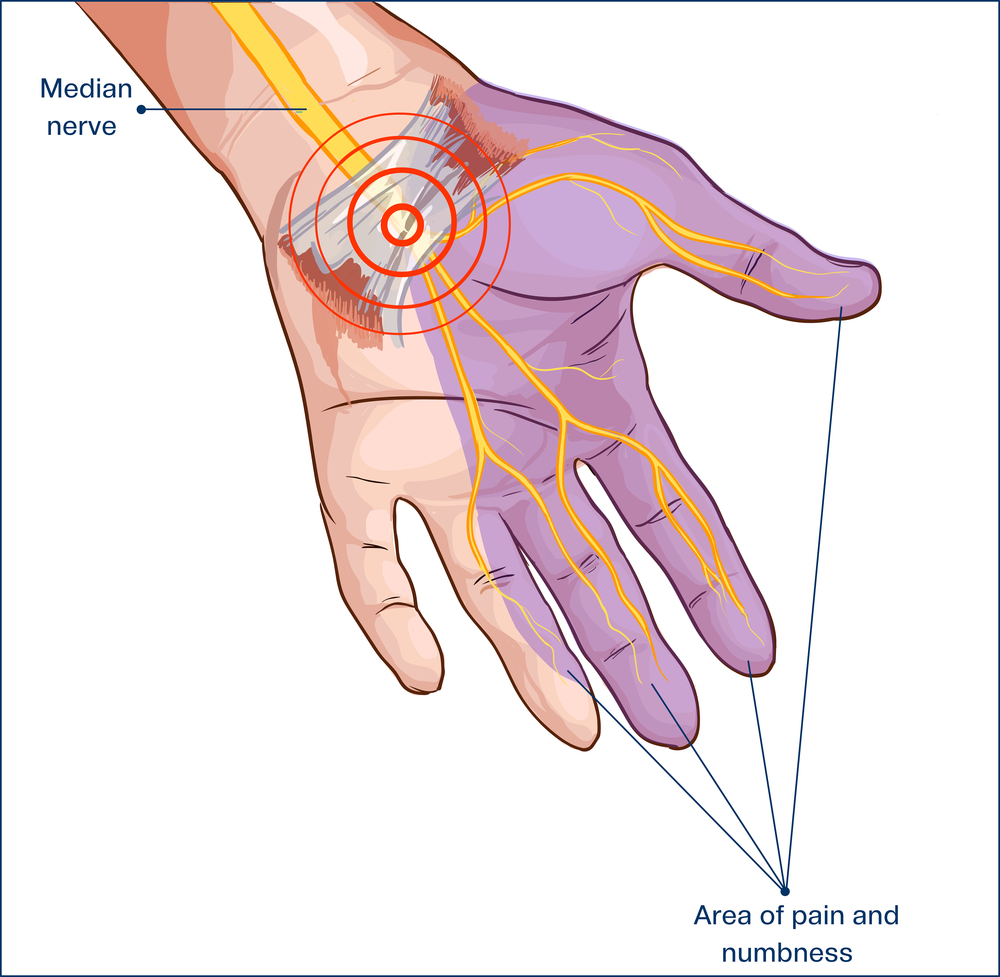
| Management Strategy | Description | Benefit |
|---|---|---|
| Correct Ball Size | Use a bowling ball that fits your hand properly and is not too heavy. | Reduces strain on the wrist and mitigates pain. |
| Warm-Up Exercises | Perform arm circles, jog in place, and gently shake out hands and wrists before playing. | Prepares muscles and joints, reducing the risk of injury. |
| Ergonomic Grip | Adopt an ergonomic way to hold the bowling ball to minimize stress on the wrist. | Prevents excessive pressure on the median nerve. |
| Wearing a Brace | Use a wrist brace or splint specifically designed for bowlers when playing. | Supports the wrist in a neutral position, reducing symptom flare-ups. |
| Regular Breaks | Take frequent breaks during bowling sessions to rest and stretch the hand and wrist. | Allows tissues to recover, preventing aggravation of CTS symptoms. |
| Lifestyle Changes | Includes taking breaks from repetitive activities, using cold packs, and avoiding exacerbating activities. | Reduces ongoing stress on the wrist, aiding in long-term management of CTS. |
What Symptoms Should a Bowler Monitor if They Have a Carpal Tunnel?
When the tissue surrounding the carpal tunnel becomes swollen, it puts pressure on the nerve, leading to symptoms such as:
- Pain, tingling, and numbness, just like arthritis.
- Weakness
Bowlers need to be particularly aware of these symptoms, as they are frequent users of their hands and wrists and, therefore, at greater risk for developing carpal tunnel.
If you experience any of these symptoms, it is important to see a doctor so that you can receive treatment and avoid further damage to the nerve.
With early diagnosis and treatment, most people are able to manage their carpal tunnel and continue bowling without pain or other limitations.

When Can I Bowl Again After a Carpal Tunnel?
While carpal tunnel is often treated with medication or surgery, many people find relief through physical therapy.
One of the most common exercises prescribed for carpal tunnel is wrist flexion and extension. These exercises help to stretch the muscles and tendons in the forearm and improve range of motion in the wrist.
Another helpful exercise is grasping and releasing a tennis ball. This helps to strengthen the muscles in the hand and improve grip strength.
While there is no one-size-fits-all timeline for recovering from carpal tunnel, most people find that they can resume normal activities within a few months of beginning physical therapy. As always, it is important to consult with a doctor or physical therapist before starting any new exercise regimen.
How Long Does It Take To Recover From Carpal Tunnel?
It depends on the severity of the carpal tunnel and how well you take care of yourself during the healing process.
Generally, it takes about six to eight weeks for the swelling and inflammation in the carpal tunnel to go down. After that, it may take up to another four to six weeks for the nerve damage to heal.
Most people find that their symptoms improve significantly within the first two or three weeks after surgery, but full recovery can often take up to 12 weeks.
The amount of time it takes for you to recover from carpal tunnel will largely depend on your individual circumstances and how well you follow your doctor's post
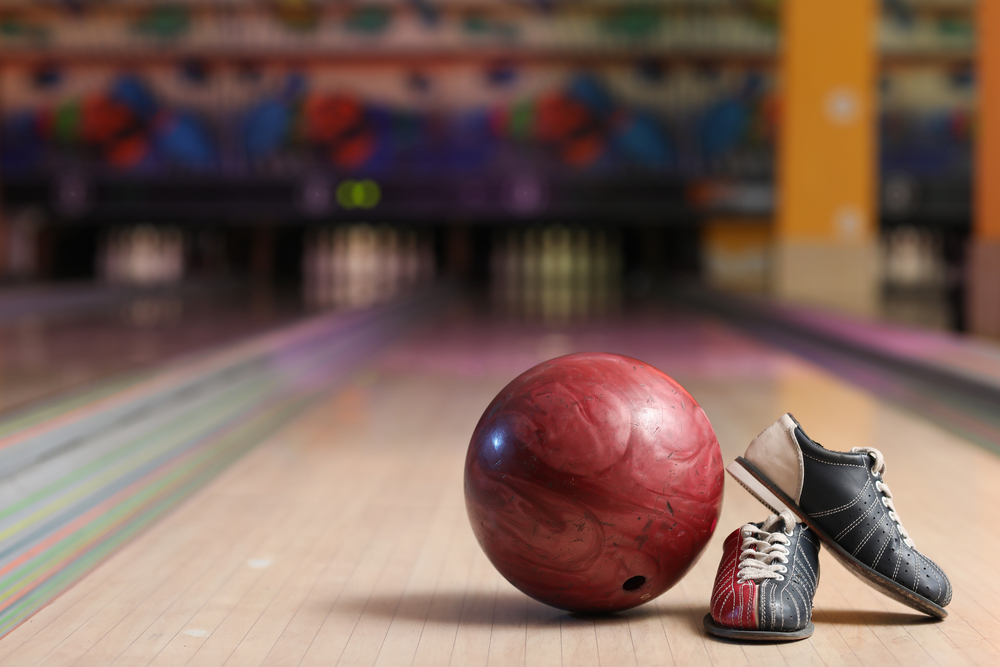
What Are the Risks of Bowling Again if I Don’t Get Carpal Tunnel Treatment?
For many people, bowling is a fun and relaxing activity. However, if you have carpal tunnel syndrome, it can be painful and uncomfortable to bowl.
If you don’t get treatment for your carpal tunnel, the risks of bowling again include further damage to your wrist and hand, as well as an increased risk of developing an infection.
In addition, if you have carpal tunnel surgery, you will need to take time off from bowling to recover. During this time, you may experience stiffness and loss of strength in your hand and wrist. For these reasons, it is important to consult with your doctor before bowling again if you have carpal tunnel syndrome.
Can Bowling Make a Carpal Tunnel Worse?
The repetitive motion can cause the tendons to become swollen, putting pressure on the nerve. In some cases, bowling can make carpal tunnel syndrome worse.
However, there are some things that bowlers can do to help prevent or reduce symptoms.
Wearing a brace or splint during bowling can help to keep the wrist in a neutral position, and taking breaks to stretch and rest the hand and wrist can also be helpful.
How Do You Prevent Carpal Tunnel While Bowling?
Bowlers are at risk of developing carpal tunnel due to the repetitive motions involved in the sport. There are several things that can be done to help prevent carpal tunnel while bowling.
- First, it is important to use proper form.
- Second, use a lighter ball if possible.
- Take breaks often to give your wrists a rest.
- Try wearing a wrist brace while bowling.
By following these tips, you can help reduce your risk of developing carpal tunnel syndrome.
What Activities Should You Avoid if You Have a Carpal Tunnel?
Although carpal tunnel syndrome can be caused by a variety of factors, it is often associated with repetitive motions of the hand and wrist.
Therefore, it is important to avoid activities that put a strain on the wrist, such as typing or using a mouse for long periods of time.
In addition, try to take frequent breaks to stretch and give your hands a rest.
If you have carpal tunnel syndrome, there are several treatment options available. However, making changes to your lifestyle is often the best way to reduce symptoms and prevent the condition from worsening.
What Activities Can You Do After Carpal Tunnel?
If you have carpal tunnel syndrome, you may be wondering what activities you can do after treatment. The good news is that there are a number of activities that can help you regain strength and mobility in your hands and wrists. Here are a few ideas to get you started:
- Wrist curls: Sit with your palms facing up and slowly curl your wrists up, then release. Repeat 10 times.
- Finger stretches: Extend your arm in front of you with your palm facing down. Using your other hand, gently pull each finger back until you feel a stretch. Hold for 10 seconds and release. Repeat with the other hand.
- Pinch strength: Place a small object between your thumb and first two fingers. Squeeze the object as hard as you can and hold for 5 seconds. Release and repeat 10 times.
By doing these simple exercises on a regular basis, you can help to improve the strength and flexibility of your hands and wrists, minimizing the symptoms of carpal tunnel syndrome.
Frequently Asked Questions
Can You Bowl With a Herniated Disc?

Bowling with a herniated disc isn't recommended as it can be extremely painful, and you don't want to do anything that might aggravate it further.
Can You Bowl With a Pacemaker?

Yes, you can. However, although there's no explicit reason why you couldn't bowl with a pacemaker, it's probably not a good idea. Pacemakers are designed to help regulate your heart rate, and the forces involved in bowling could potentially disrupt the device. Plus, if you were to have an accident while bowling, the pacemaker could be damaged.
If you're interested in taking up bowling as a hobby, talk to your doctor to see if they have any concerns. They may be able to give you some specific advice on how to participate safely in the activity.
Related Articles
My Final Words
Individuals engaging in activities requiring repetitive hand and wrist movements, like bowling or computer usage, should be mindful of Carpal Tunnel Syndrome (CTS) risk factors to preserve their bowling career and overall hand health. Incorporating stretching exercises involving the shoulder, elbow, and knee can offer comprehensive support to reduce pain and prevent the condition's occurrence.
Specifically designed wrist braces can also aid in mitigating discomfort, particularly for those experiencing symptoms in the middle finger, a standard CTS indicator. While surgery is considered a last resort, early intervention with these preventive measures can significantly lessen the likelihood of severe CTS development, allowing bowlers and computer users alike to continue their passions with minimal disruption.
Kira Byrd, a Certified Fraud Examiner, holds a B.S. in Accounting from the University of Alabama at Birmingham. With a passion for bowling from her childhood, Kira has poured her expertise and personal experiences into creating and nurturing Bowling For Beginners. Kira's mission is to meet new bowlers where they are and guide them toward consistently achieving higher scores. With a focus on skill development and strategic techniques, she empowers readers to take control of their game and unlock their true potential.
Bowling For Beginners embodies strict editorial integrity, ensuring reliable and unbiased information. Kira's commitment to delivering valuable insights and practical strategies is reflected in every article. Here's an explanation of our editorial policy and how we get money.


